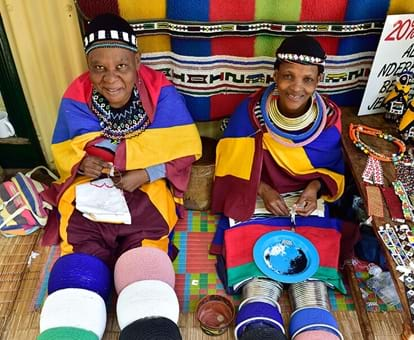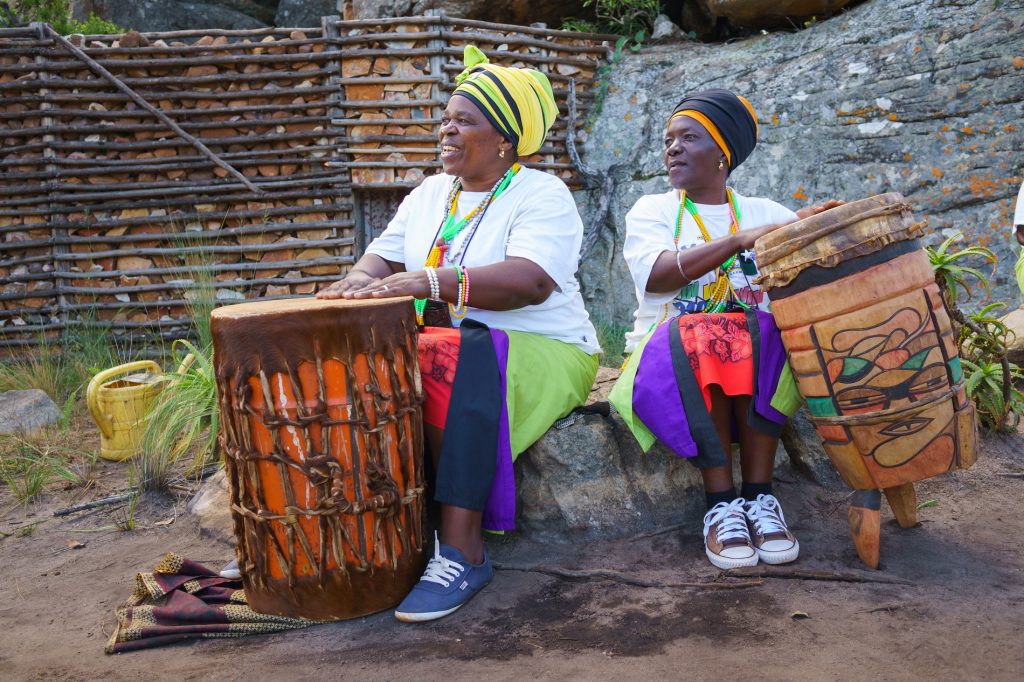South African Culture Today Can Be Fun For Anyone
South African Culture Today Can Be Fun For Anyone
Blog Article
The Buzz on South African Culture Today
Table of ContentsSouth African Culture Today Can Be Fun For AnyoneExcitement About South African Culture TodaySouth African Culture Today Things To Know Before You BuyTop Guidelines Of South African Culture TodayFacts About South African Culture Today Uncovered6 Simple Techniques For South African Culture Today
This follows with vocal singing and drum beating. The groom and bride then fulfill with the seniors and speak about the significance of their union. An issue of relevance in Zambian villages is the passing away of liked ones. All participants of the town put money, effort and time with each other for the burial of the deceased.Throughout the grieving period; men stay outside your home and the ladies remain inside your home of the deceased. After discussing the deceased, the village walks to the location of interment to state their last bye-byes. Songs and dancing is a really vital aspect of the Zambian culture. The various tribal systems have their very own dancing kinds; however, makishi prevails amongst all people.
About South African Culture Today
When it concerns songs, drums are utilized one of the most, with a selection of drumming ceremonies. In Zambia, bulk of the people are Christian; Protestant and Roman Catholic. There are tiny groups of Muslims and Hindus, with the remainder following regional indigenous tribal beliefs.

South African heritage and culture is immensely diverse, and consists of various teams of individuals that each have their very own practices and ideas. Having such a variety of individuals and societies is what makes South Africa so unique. In truth sense of the phrase, we are a rainbow nation.
South Africa has roughly three hundred thousand Portuguese people living in it. Making it the 7th on the list of countries with the most Portuguese people in it beyond Portugal. Portuguese is not just a society, yet it is additionally a language and a race. Portuguese individuals stem from the nation of Portugal in Europe, nevertheless, as a result of Portugal (like several various other nations in Europe) checking out the world and conquering various other nations during the 15th 20th centuries, South Africa has what we call Portuguese South African's living in it.
What Does South African Culture Today Do?
Among the famous features of the topography is a plateau that covers nearly two thirds of the facility of the country. The plateau complicated climbs towards the southeast, where it climaxes in the Drakensberg variety, component of an escarpment that divides the plateau from the seaside areas. The Drakensburg consists of Champagne Castle, the greatest optimal in the country.
The area north of the Witwatersrand, called the bushveld, inclines downward from east to west towards the Limpopo River, which creates the international border. The western area of the plateau, the middleveld, also descends in the direction of the west and varies in elevation in between the highveld and bushveld. In between the Drakensburg and the eastern and southern shoreline, the land comes down to the sea.
Nearer the coast there is a low-lying plain called the eastern lowveld. Southwest of the plateau the nation comes to be progressively a lot more dry, paving the way to the hostile desert of the Great Karroo, approached the east by the reduced, much better sprinkled plateau of the Little Karroo. Separating the dry southern interior from the sandy littoral of the southerly shore and West Cape is another range, the Langeberg.
The Basic Principles Of South African Culture Today
The country's racially, ethnically, and politically separated background has actually created informative post national and subnational symbols that still function as symbols of the country, and others icons that are approved just by particular groups. The monuments to white settler conquest and political dominance, such as the Afrikaner Voortrekker ("leader") Monolith in Pretoria and the Rhodes Monolith recognizing the British colonial empire home builder and Cape head of state Cecil Rhodes, stay sectarian signs.
The very first modern inhabitants were the San ("bushman") hunter-gatherers and the Khoi ("Hottentot") individuals, that herded livestock (South African culture today). The San might have been existing for thousands of years and left evidence of their existence in countless old cavern paintings ("rock art"). Bantu-speaking clans that were the ancestors of the Nguni (today's amaZulu, amaXhosa, amaSwazi, and vaTsonga individuals) and Tswana-Sotho language teams (today's Batswana and Southern and Northern Basotho) moved below east Africa as very early as the fifteenth century

Both former republics of the Orange Free State and Transvaal (South African Republic) were developed by Afrikaner settlers who beat and dispossessed the Basotho and Batswana. Lesotho would certainly have been forcibly included into the Orange Free State without the extension of British defense in 1869. The supreme marriage of the nation resulted from the South African Battle (18991902) in between the British and the two Afrikaner republics, which lowered the country to spoil at the beginning of the twentieth century.
Afrikaners historically considered themselves the just real South Africans and, while granting full citizenship to all citizens of European descent, refuted that status to people of shade till the autonomous transition of 1994. British South Africans keep a feeling of social and social link to Great Britain without compromising their identification as South Africans.
Fascination About South African Culture Today
The diversity and fragmentation within ethnic groupings and the equilibrium of stress in between those teams throughout the twentieth century prevented interethnic civil conflict. While intergroup stress over sources, entitlements, and political supremacy remain, those conflicts are as most likely to match Zulu versus Zulu as Zulu against Xhosa or African against Afrikaner.
From colonial India, British merchants and managers brought the bent steel ornamental roofings and slender lace job columns that still typify the verandas of homes arounds and cities throughout the country. Holy places add a crucial building element even in the smallest communities. Along with the skyrocketing steeples and classic stonework of Afrikaans Dutch Reformed churches, Anglican churches, synagogues, mosques, and Hindu temples supply range to the religious building scene.

Butchering and the brewing of standard grain beer are necessary in securing the involvement and a good reputation of over at this website the ancestors who are taken into consideration the guardians of good ton of money, success, and health. Indian neighborhoods keep their indigenous cooking traditions and apply them on Islamic and Hindu routine and ritualistic celebrations. Afrikaners and Coloured people gather at weekends and unique celebrations at multifamily barbecues called braais, where community bonds are enhanced.
Due to the fact that this was the main click this link financial venture of both black Africans and white colonists, conflict between those groups focused on the property of grazing land and animals. In 1867, the largest diamond deposits in the world were found at Kimberley in the west central area. The riches from those areas assisted fund the exploitation of the best gold coral reef on the planet, which was uncovered on the Witwatersrand in 1886.
The Best Guide To South African Culture Today
This brought about misconceptions and calculated misstatement in the transactions of white settlers and federal government authorities with African chiefs during the early american period (South African culture today). In the establishment of African gets, some facets of common and chiefly "tribal count on" land tenure were preserved, and even in white rural locations, kinds of common period were still exercised in areas with African areas
After the democratic transformation of 1994, programs for land restitution, redistribution, and reform were set up, however progress has been slow-moving. The white minority still manages eighty percent of the land. Following farming land invasions in Zimbabwe, the Division of Land Affairs has vowed to speed up land redistribution.
Report this page